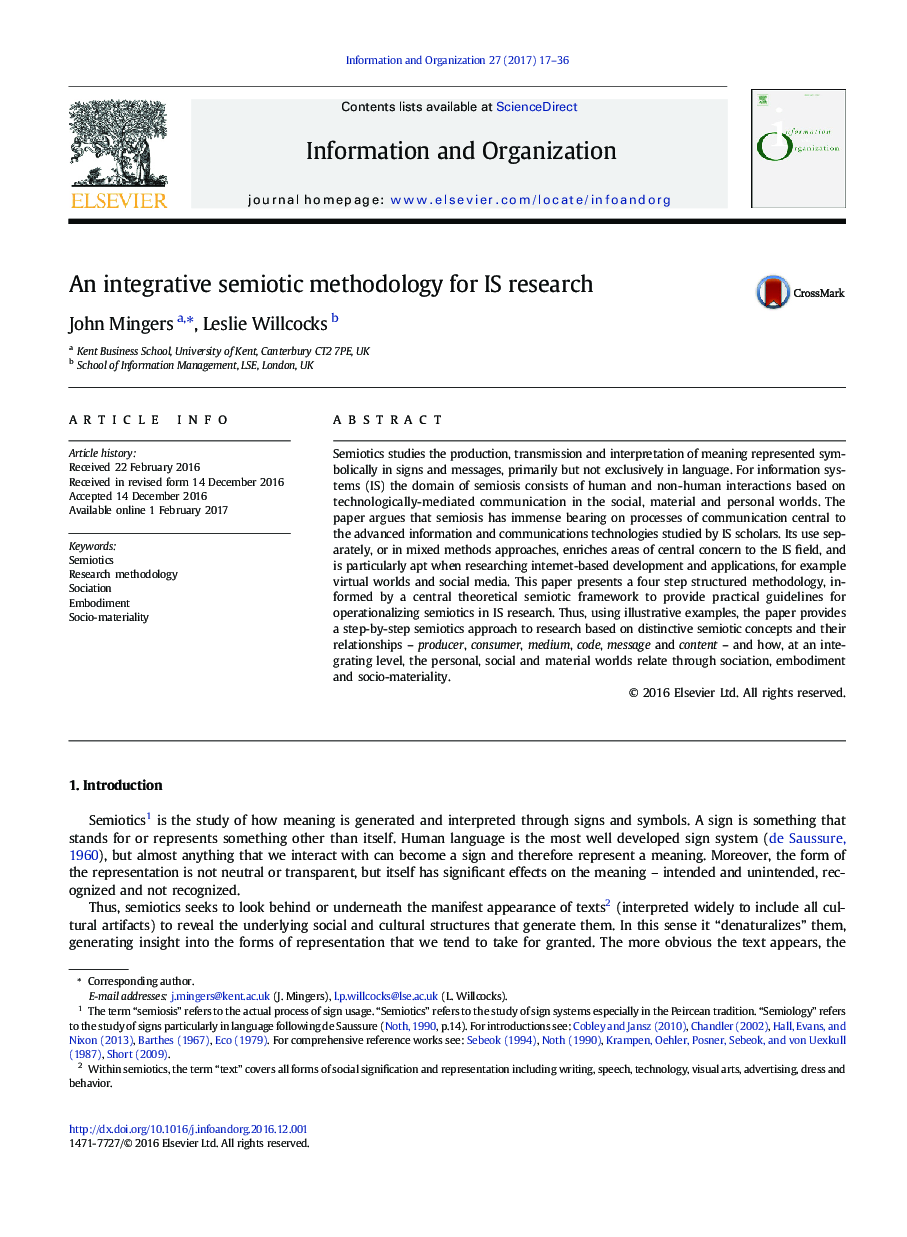| Article ID | Journal | Published Year | Pages | File Type |
|---|---|---|---|---|
| 4972701 | Information and Organization | 2017 | 20 Pages |
â¢Develops practical guidelines for using semiotic concepts within IS researchâ¢Describes many concepts that enable us to understand how meaning is conveyed consciously and unconsciouslyâ¢Describes over thirty practical examples within IS and analyses some in detail
Semiotics studies the production, transmission and interpretation of meaning represented symbolically in signs and messages, primarily but not exclusively in language. For information systems (IS) the domain of semiosis consists of human and non-human interactions based on technologically-mediated communication in the social, material and personal worlds. The paper argues that semiosis has immense bearing on processes of communication central to the advanced information and communications technologies studied by IS scholars. Its use separately, or in mixed methods approaches, enriches areas of central concern to the IS field, and is particularly apt when researching internet-based development and applications, for example virtual worlds and social media. This paper presents a four step structured methodology, informed by a central theoretical semiotic framework to provide practical guidelines for operationalizing semiotics in IS research. Thus, using illustrative examples, the paper provides a step-by-step semiotics approach to research based on distinctive semiotic concepts and their relationships - producer, consumer, medium, code, message and content - and how, at an integrating level, the personal, social and material worlds relate through sociation, embodiment and socio-materiality.
